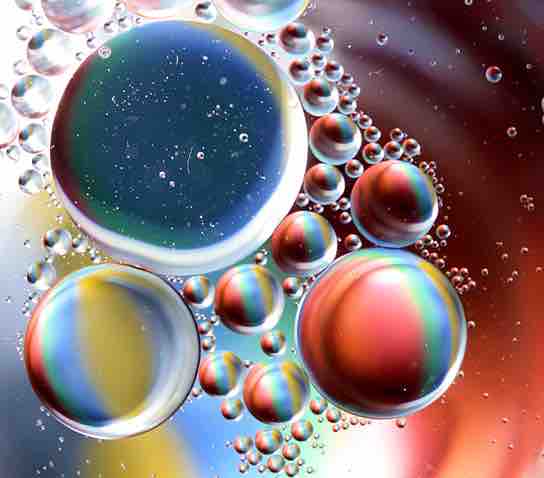One of water's important properties is that it is composed of polar molecules. The two hydrogen atoms and one oxygen atom within water molecules (H2O) form polar covalent bonds. While there is no net charge to a water molecule, the polarity of water creates a slightly positive charge on hydrogen and a slightly negative charge on oxygen, contributing to water's properties of attraction. Water's charges are generated because oxygen is more electronegative, or electron loving, than hydrogen. Thus, it is more likely that a shared electron would be found near the oxygen nucleus than the hydrogen nucleus. Since water is a nonlinear, or bent, molecule, the difference in electronegativities between the oxygen and hydrogen atoms generates the partial negative charge near the oxygen and partial positive charges near both hydrogens.

Nonpolar Molecules
Oil and water do not mix. As this macro image of oil and water shows, oil does not dissolve in water but forms droplets instead. This is due to it being a nonpolar compound.
As a result of water's polarity, each water molecule attracts other water molecules because of the opposite charges between them, forming hydrogen bonds. Water also attracts, or is attracted to, other polar molecules and ions, including many biomolecules, such as sugars, nucleic acids, and some amino acids. A polar substance that interacts readily with or dissolves in water is referred to as hydrophilic (hydro- = "water"; -philic = "loving"). In contrast, nonpolar molecules, such as oils and fats, do not interact well with water, as shown in . These molecules separate from it rather than dissolve in it, as we see in salad dressings containing oil and vinegar (an acidic water solution). These nonpolar compounds are called hydrophobic (hydro- = "water"; -phobic = "fearing").